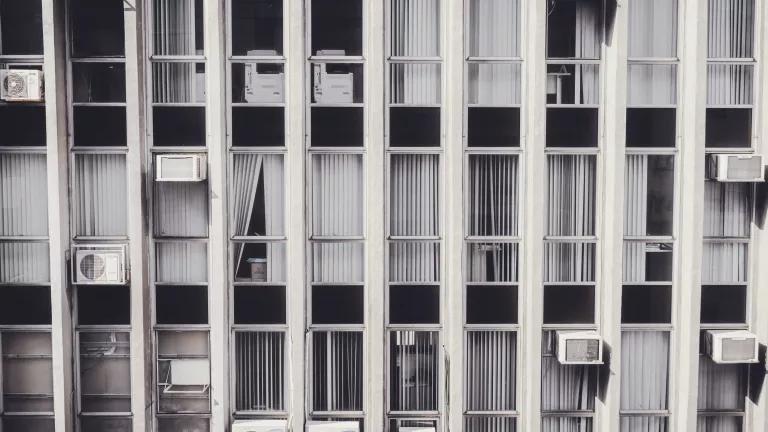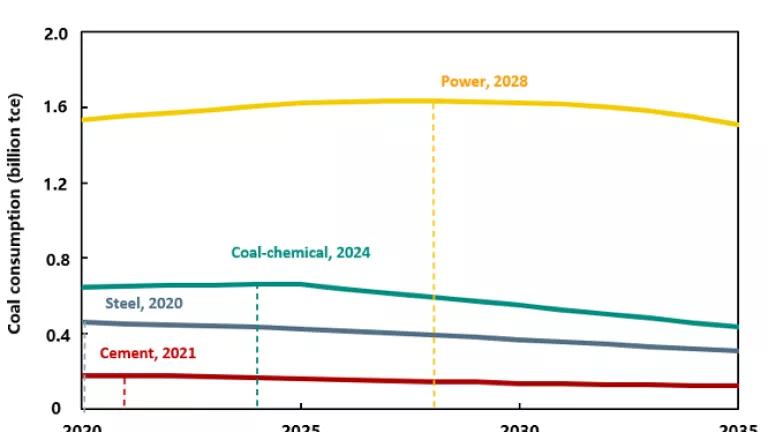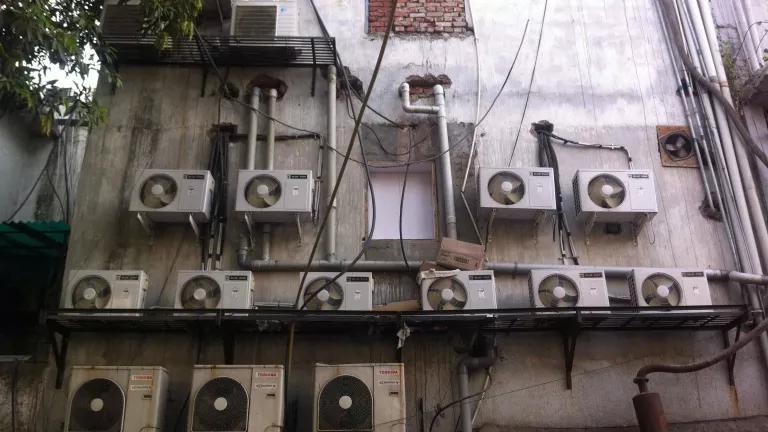China Gives a Cool Boost to Effort to Reduce Global Warming
President Xi Jinping's announcement that China has decided to accept the Kigali Amendment to the Montreal Protocol on Substances that Deplete the Ozone Layer is a major global climate win that should also lend a boost of confidence to broader climate talks heating up this year.

Air conditioners like these use climate-harming HFCs across the world today.
Update: 4/18/2021
The U.S. and China affirmed their joint commitment to phasing down HFCs in line with the Kigali Amendment to the Montreal Protocol yesterday, following two days of talks between U.S. Special Presidential Envoy for Climate John Kerry and China Special Envoy for Climate Change Xie Zhenhua. The joint statement, part of a larger package of collaborative approaches to tackling the climate crisis, builds on the news of China's decision to accept the Kigali Amendment last week.
--
President Xi Jinping said that China has decided to accept the Kigali Amendment to the Montreal Protocol on Substances that Deplete the Ozone Layer earlier today. The announcement, part of a conversation with Chancellor Merkel of Germany and President Macron of France, is a major global climate win that should also lend a boost of confidence to broader climate talks heating up this year.
The move will also solidify China’s climate credentials in the Montreal Protocol forum—which focuses on cooling-related industries using fluorocarbon technology—and signals to several other major economies that China is fully on board the major market transition that is already underway. Market players and governments should take from China’s ratification announcement a clear signal that climate ambition in the cooling sector is fast becoming a necessity to stay competitive in the global market.
The Kigali Amendment aims to phase down HFC production worldwide by at least 80 percent over the coming decades under the Montreal Protocol. Commonly used in air conditioners, refrigeration equipment and foam insulation, HFCs are super greenhouse gases that, pound-for-pound, are on average several thousand times more potent than CO2 as a contributor to climate change. If fully implemented, the Kigali Amendment could prevent up to 0.5°C of global warming by the end of this century.
China’s ratification couldn’t be more important to the success of the global HFC phasedown. The country’s formidable manufacturing base churns out some 70% of the world’s room air conditioners and much of the world’s other HFC-using appliances. China’s chemicals industry also produces the vast majority of the world’s HFC gases today. China’s participation in Kigali thus brings along more than half of the world’s HFC production and use.
There are a few likely next steps before China’s ratification becomes official. Once ready, the government will send formal paperwork, called an instrument of ratification, to the United Nations. Once the instrument of ratification is deposited with the U.N. all will be said and done.
The United States Is Poised to Act, Too
Dialogue between the United States and China was a key ingredient for success in the global talks that led to the HFC phasedown agreement. In 2013, Presidents Barack Obama and Xi Jinping agreed to work together towards a Montreal Protocol amendment to guide a global transition to climate-friendlier cooling gases. The two countries’ diplomats played key roles in the multilateral negotiations that led to the gavel falling in Kigali in 2016.
This January, President Biden announced the United States’ intention to ratify Kigali, directing the State Department to prepare to submit it to the Senate for its advice and consent to ratification. Submittal to the U.S. Senate is expected soon.
The U.S. is already moving to meet its obligations under the Kigali Amendment through domestic legislation and regulations. Congress enacted domestic implementing law, the American Innovation and Manufacturing (AIM) Act, in late 2020, which requires mandatory, nationwide reductions in HFCs in alignment with the Kigali Amendment’s schedule. The AIM Act equips the U.S. Environmental Protection Agency with the necessary tools to smoothly and quickly transition each segment of the HFC market to climate-friendlier alternatives. The U.S. will likely be fully compliant with Kigali by way of the AIM Act by the start of 2022.
The World Benefits
China’s and the U.S.’s movement to ratify provide a strong signal to the rest of the world that the two biggest economies are all-in on the Kigali Amendment and will help bring other countries along to deliver its environmental and economic benefits.
Between now and 2050, full implementation of the Kigali Amendment is expected to prevent as much climate-warming pollution as the entire planet emits for two full years. All in all, we’ll avoid up to 0.5°C of needless climate warming by century’s end.
But That’s Not All.
The HFC phase-down also brings with it significant energy savings and air pollution reduction co-benefit: Industries have the opportunity to upgrade their technology and improve the efficiency of their manufacturing processes and cooling appliances while making the switch to climate-friendly alternatives to HFC. Improving the energy efficiency of cooling equipment in parallel with the HFC phase-down could potentially more than double the climate benefits of the Kigali Amendment. A recent study finds that if all the economic potential for energy efficiency improvements is fully captured, the cooling electricity savings could be as high as 15% of the world’s future electricity consumption. Electricity savings also mean improved air quality from reduced sulfur dioxide, nitrogen oxides and fine particulate matters emissions that result from power generation.
China’s Cooling Action
China is already on its way to implementing an HFC phasedown with major energy efficiency cobenefits. Along with ratifying the amendment, China is also developing regulations to support the enforcement of the HFC phase-down. Additionally, China has already committed to strengthening cooling efficiency with the release of its Green and High Efficiency Cooling Actin Plan in 2019. The Plan aims to improve residential air conditioners energy efficiency by 30% by 2022 and set targets for other cooling appliances as well as an additional 15% improvement for major cooling products by 2030. Already, China’s new minimum energy performance standard for room air conditioners which came into effect last July is among the most ambitious in the world, with an average 15% improvement in energy efficiency. Once fully implemented, the Plan will reduce annual CO2 emissions by approximately 100 MMT/year in 2030, the equivalent to taking 2-3 dozen 500 megawatt powerplants off the grid.
The Climate-Friendly Cooling Benefits Go Beyond Chinese Borders.
As noted, China produces 70% of the world’s room air conditioners. The new Chinese energy efficiency standards, and those on HFCs expected under the Kigali Amendment, send a clear signal that China can supply efficient, climate friendly models to any country that wants them. The United for Efficiency (U4E)—a U.N. initiative working to reduce appliance energy use in emerging economies (and of which NRDC is a founding partner)—has published model regulations that can be adopted by countries to reduce energy use of new air conditioners and refrigerators as well as harmful emissions from the refrigerant gases they use. The U4E energy efficiency recommendations are largely consistent with China’s new standard and will help countries that import air conditioners set energy efficiency regulations that demand performance as good or better than the new Chinese standard.





